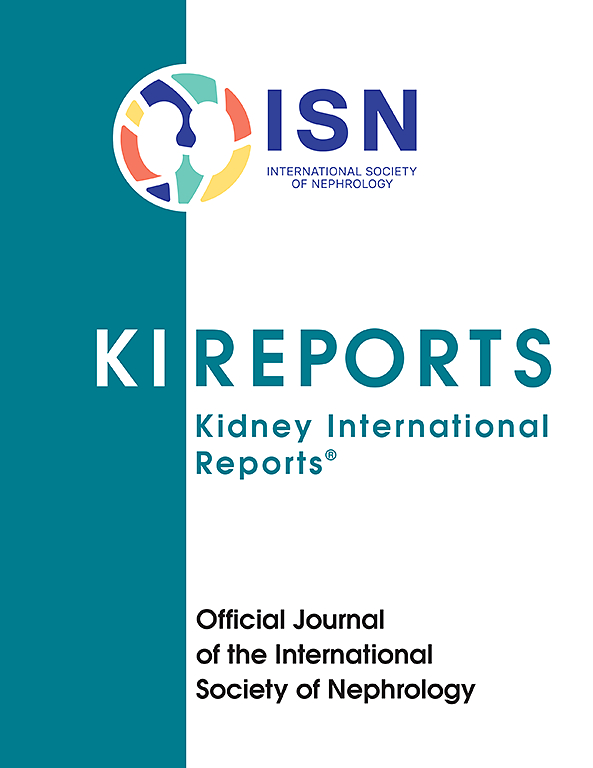CARI Guideline: Evidence-Based Recommendations for Balanced Electrolyte Solutions to Improve Kidney Transplant Outcomes
IF 5.7
2区 医学
Q1 UROLOGY & NEPHROLOGY
引用次数: 0
Abstract
Kidney transplantation is an optimal treatment for kidney failure; however, delayed graft function is a common complication with a prevalence of up to 40% in deceased donor transplantation. The use of i.v. fluids during kidney transplantation is required for hemodynamic stability; however, there are concerns that normal saline may contribute to increased delayed graft function and hyperchloremic metabolic acidosis. Balanced electrolyte solutions have been suggested as an alternative i.v. fluid that may decrease delayed graft function. However, there have been concerns that this may increase hyperkalemia in transplant recipients. This guideline seeks to synthesize the available evidence and make recommendations for the Australian and New Zealand care by a multidisciplinary working group, including consumers with lived experience of kidney transplantation.
A recently published systematic review and meta-analysis of randomized controlled trials (RCTs), including data from the BEST Fluids trial, evaluating balanced electrolyte solutions versus normal saline in kidney transplants was identified and absolute effects were determined using baseline risks of SONG Transplant Core outcomes from either national registries or event rates in the control arms of the included trials. All outcomes were assessed using the GRADE certainty of evidence. The GRADE Evidence-to-Decision framework was used to develop recommendations for care and clinical practice points.
Balanced electrolyte solution compared with normal saline resulted in an 18% reduction in delayed graft function (7 studies, 1306 participants, risk ratio: 0.82; 95% confidence interval [CI]: 0.71–0.94) and no differences across living and deceased donation were evident. In deceased donation, balanced electrolyte solution compared with normal saline has a clinically important decrease in delayed graft function (69 fewer per 1000 patients; 95% CI: 111 to 23 fewer]). The use of balanced electrolyte solution compared with normal saline has an unclear effect on hyperkalemia but it may be no different (66 fewer per 1000 patients; 95% CI: 207 fewer to 136 more). In living donation, the use of balanced electrolyte solutions had very small benefits on the risk of delayed graft function (7 few per 1000 patients; 95% CI: 12 fewer to 2 fewer). In those receiving a living donor kidney transplant, the effects of balanced electrolyte solutions compared with normal saline on hyperkalemia were unclear but are likely to be no different (25 fewer per 1000 patients; 95% CI: 79 fewer to 52 more).
Balanced electrolyte solutions are recommended for deceased donor transplants, with a moderate certainty of evidence. However, in living donation transplants balanced electrolyte solutions are only suggested with a low degree of certainty of evidence. Further research is needed on patient-centered outcomes and the use of balanced solutions in pediatric populations to optimize kidney transplant care.
CARI指南:平衡电解质溶液改善肾移植结果的循证建议
肾移植是治疗肾衰竭的最佳方法;然而,移植功能延迟是一种常见的并发症,在死亡供体移植中患病率高达40%。肾移植过程中需要静脉输液以保持血流动力学的稳定性;然而,也有人担心生理盐水可能导致移植物功能延迟和高氯血症代谢性酸中毒。平衡电解质溶液已被建议作为一种替代的静脉注射液体,可能会减少延迟的移植物功能。然而,有人担心这可能会增加移植受者的高钾血症。本指南旨在综合现有证据,并由一个多学科工作组(包括有肾移植生活经验的消费者)为澳大利亚和新西兰的护理提出建议。最近发表的一项随机对照试验(rct)的系统综述和荟萃分析,包括BEST流体试验的数据,确定了平衡电解质溶液与生理盐水在肾移植中的对比,并使用SONG移植核心结果的基线风险或纳入试验的对照组的事件发生率来确定绝对效果。所有结果均采用GRADE证据确定性进行评估。GRADE证据到决策框架用于制定护理和临床实践点的建议。与生理盐水相比,平衡电解质溶液导致移植物延迟功能降低18%(7项研究,1306名参与者,风险比:0.82;95%可信区间[CI]: 0.71-0.94),在世和已故捐赠之间无明显差异。在死者捐献中,与生理盐水相比,平衡电解质溶液在延迟移植物功能方面具有重要的临床意义(每1000例患者减少69例;95% CI: 111 - 23[])。与生理盐水相比,使用平衡电解质溶液对高钾血症的影响尚不清楚,但可能没有什么不同(每1000例患者少66例;95% CI:少207个,多136个)。在活体捐献中,使用平衡电解质溶液对移植物功能延迟风险的益处非常小(每1000例患者中只有7例;95% CI:少12到少2)。在接受活体供体肾移植的患者中,与生理盐水相比,平衡电解质溶液对高钾血症的影响尚不清楚,但可能没有区别(每1000例患者少25例;95% CI:少79比多52)。平衡电解质溶液推荐用于已故供体移植,有中等确定性的证据。然而,在活体捐献移植中,平衡电解质溶液的建议证据的确定性较低。需要进一步研究以患者为中心的结果和在儿科人群中使用平衡的解决方案来优化肾移植护理。
本文章由计算机程序翻译,如有差异,请以英文原文为准。
求助全文
约1分钟内获得全文
求助全文
来源期刊

Kidney International Reports
Medicine-Nephrology
CiteScore
7.70
自引率
3.30%
发文量
1578
审稿时长
8 weeks
期刊介绍:
Kidney International Reports, an official journal of the International Society of Nephrology, is a peer-reviewed, open access journal devoted to the publication of leading research and developments related to kidney disease. With the primary aim of contributing to improved care of patients with kidney disease, the journal will publish original clinical and select translational articles and educational content related to the pathogenesis, evaluation and management of acute and chronic kidney disease, end stage renal disease (including transplantation), acid-base, fluid and electrolyte disturbances and hypertension. Of particular interest are submissions related to clinical trials, epidemiology, systematic reviews (including meta-analyses) and outcomes research. The journal will also provide a platform for wider dissemination of national and regional guidelines as well as consensus meeting reports.
 求助内容:
求助内容: 应助结果提醒方式:
应助结果提醒方式:


